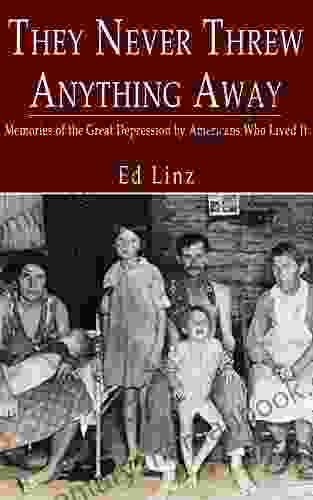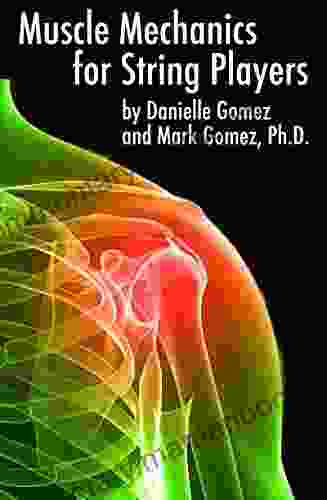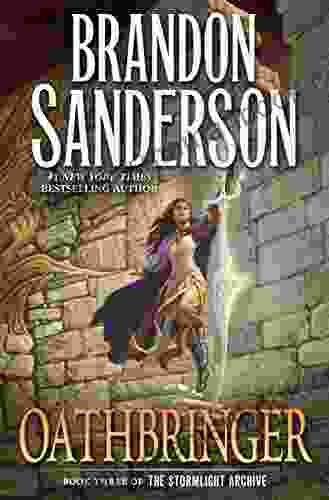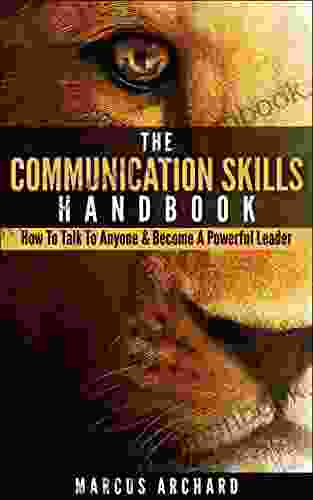Muscle Mechanics For String Players: A Comprehensive Guide to Efficient Playing Techniques

String playing instruments, such as the violin, viola, cello, and double bass, require a unique combination of strength, dexterity, and coordination. Understanding the underlying muscle mechanics involved in playing these instruments is crucial for developing efficient and healthy playing techniques. This comprehensive guide will delve into the anatomy and mechanics of the muscles used in string playing, providing practical insights and exercises to improve your technique and enhance your overall performance.
5 out of 5
| Language | : | English |
| File size | : | 8510 KB |
| Text-to-Speech | : | Enabled |
| Screen Reader | : | Supported |
| Enhanced typesetting | : | Enabled |
| Word Wise | : | Enabled |
| Print length | : | 19 pages |
| Lending | : | Enabled |
Anatomy of the String Playing Apparatus
The muscles involved in string playing can be broadly categorized into those responsible for:
- Bowing: The bow is held between the thumb, index finger, and middle finger, with the remaining fingers resting on the bow stick. The muscles of the forearm, wrist, and fingers work together to control the bow's movement, speed, and pressure.
- Fingering: The left hand fingers are used to press down on the strings to produce different notes. The muscles of the fingers, hand, and forearm work in coordination to achieve precise finger placement and efficient fingering patterns.
- Posture: Maintaining proper posture is essential for supporting the instrument and facilitating efficient playing. The muscles of the back, neck, and core work together to maintain an upright and balanced position.
Muscle Mechanics of Bowing
Bowing involves a complex interplay of muscles to control the bow's movement. The primary muscles involved include:
- Pronators: These muscles rotate the forearm inward, enabling the bow to move towards the strings.
- Supinators: These muscles rotate the forearm outward, allowing the bow to move away from the strings.
- Flexors: These muscles bend the wrist, bringing the bow closer to the strings.
- Extensors: These muscles extend the wrist, lifting the bow away from the strings.
- Finger flexors and extensors: These muscles control the fingers responsible for holding and guiding the bow.
Exercises for Efficient Bowing
To improve bowing technique:
- Pronation and supination exercises: Practice rotating the forearm inward and outward with the bow in hand.
- Wrist flexion and extension exercises: Bend and extend the wrist while holding the bow.
- Bowing scales: Practice bowing slowly and evenly, focusing on maintaining consistent pressure and speed.
- Long bow exercises: Practice drawing long, sustained bows to develop strength and endurance.
Muscle Mechanics of Fingering
Fingering requires precise finger placement and dexterity. The main muscles involved include:
- Finger flexors: These muscles bend the fingers to press down on the strings.
- Finger extensors: These muscles extend the fingers to release the strings.
- Abductor pollicis brevis: This muscle abducts (moves away from the thumb) the index finger, facilitating fingerings that require wide stretches.
- Interosseous muscles: These muscles control the lateral (sideways) movements of the fingers.
Exercises for Efficient Fingering
To enhance fingering technique:
- Finger strengthening exercises: Use finger exercisers or play finger-strengthening exercises on the instrument.
- Finger independence exercises: Practice moving each finger independently while keeping the others stationary.
- Scale and arpeggio exercises: Practice scales and arpeggios to improve finger coordination and dexterity.
- Wide interval exercises: Practice fingering notes that require wide stretches to develop the abductor pollicis brevis muscle.
Muscle Mechanics of Posture
Proper posture provides a stable foundation for playing. The key muscles involved include:
- Erector spinae: These muscles support the spine and maintain an upright posture.
- Transversus abdominis: This muscle supports the lower back and helps stabilize the core.
- Gluteus maximus: This muscle provides stability and power to the hips and legs, supporting the instrument's weight.
- Neck flexors and extensors: These muscles control the position and movement of the head and neck.
Exercises for Good Posture
To improve posture:
- Core strengthening exercises: Practice exercises like planks, crunches, and side bridges to strengthen the core muscles.
- Back strengthening exercises: Perform exercises like back extensions and rows to strengthen the erector spinae muscles.
- Hip and leg strengthening exercises: Engage in exercises like squats, lunges, and hamstring curls to strengthen the gluteus maximus and leg muscles.
- Posture awareness exercises: Practice sitting and standing with proper alignment, using a mirror or having someone observe your posture.
Benefits of Efficient Muscle Mechanics
Mastering efficient muscle mechanics in string playing brings numerous benefits:
- Reduced strain and muscle fatigue: Proper muscle mechanics distribute the load more evenly, reducing the risk of strain and fatigue in the hands, arms, and back.
- Improved precision and accuracy: Efficient muscle control allows for more precise finger placement and bowing movements, enhancing accuracy and intonation.
- Enhanced musical expression: Efficient playing techniques free up mental resources, enabling players to focus on expressing their musicality and interpretation.
- Increased endurance: Developing proper muscle mechanics helps build strength and endurance, allowing players to perform for extended periods without discomfort.
- Reduced risk of injuries: By minimizing strain and avoiding excessive muscle loading, efficient muscle mechanics help prevent playing-related injuries.
Understanding the muscle mechanics involved in string playing is essential for developing efficient techniques and achieving optimal performance. By paying attention to proper posture, efficient bowing and fingering techniques, and incorporating targeted exercises into your practice routine, you can enhance your technical abilities, reduce strain, and enjoy the joy of playing for many years to come. Remember, the pursuit of efficient muscle mechanics is an ongoing journey that requires dedication, patience, and a passion for the art of string playing.
5 out of 5
| Language | : | English |
| File size | : | 8510 KB |
| Text-to-Speech | : | Enabled |
| Screen Reader | : | Supported |
| Enhanced typesetting | : | Enabled |
| Word Wise | : | Enabled |
| Print length | : | 19 pages |
| Lending | : | Enabled |
Do you want to contribute by writing guest posts on this blog?
Please contact us and send us a resume of previous articles that you have written.
 Top Book
Top Book Novel
Novel Fiction
Fiction Nonfiction
Nonfiction Literature
Literature Paperback
Paperback Hardcover
Hardcover E-book
E-book Audiobook
Audiobook Bestseller
Bestseller Classic
Classic Mystery
Mystery Thriller
Thriller Romance
Romance Fantasy
Fantasy Science Fiction
Science Fiction Biography
Biography Memoir
Memoir Autobiography
Autobiography Poetry
Poetry Drama
Drama Historical Fiction
Historical Fiction Self-help
Self-help Young Adult
Young Adult Childrens Books
Childrens Books Graphic Novel
Graphic Novel Anthology
Anthology Series
Series Encyclopedia
Encyclopedia Reference
Reference Guidebook
Guidebook Textbook
Textbook Workbook
Workbook Journal
Journal Diary
Diary Manuscript
Manuscript Folio
Folio Pulp Fiction
Pulp Fiction Short Stories
Short Stories Fairy Tales
Fairy Tales Fables
Fables Mythology
Mythology Philosophy
Philosophy Religion
Religion Spirituality
Spirituality Essays
Essays Critique
Critique Commentary
Commentary Glossary
Glossary Bibliography
Bibliography Index
Index Table of Contents
Table of Contents Preface
Preface Introduction
Introduction Foreword
Foreword Afterword
Afterword Appendices
Appendices Annotations
Annotations Footnotes
Footnotes Epilogue
Epilogue Prologue
Prologue Mario Vattani
Mario Vattani Donald S Passman
Donald S Passman Sonali Dev
Sonali Dev Robert S Kaplan
Robert S Kaplan Jeff Flygare
Jeff Flygare Richard Kostelanetz
Richard Kostelanetz Annette Lacroix
Annette Lacroix Alison Toplis
Alison Toplis John L Hosp
John L Hosp Lisa Campton
Lisa Campton Chloe Garcia Roberts
Chloe Garcia Roberts Paul Hanley
Paul Hanley Jeff Mccarley
Jeff Mccarley Omar Gonzalez
Omar Gonzalez Steven Moore
Steven Moore Shelly Mettling
Shelly Mettling Joshua Bennett
Joshua Bennett Joe Haward
Joe Haward Jennifer Allen
Jennifer Allen Douglas Hedley
Douglas Hedley
Light bulbAdvertise smarter! Our strategic ad space ensures maximum exposure. Reserve your spot today!

 Pete BlairOn the Origin, Management, and Prevention of Cancer: A Comprehensive Guide to...
Pete BlairOn the Origin, Management, and Prevention of Cancer: A Comprehensive Guide to...
 Julio Ramón RibeyroKing Ransom: Unveiling the Enthralling Prequels to the Legendary Alexander...
Julio Ramón RibeyroKing Ransom: Unveiling the Enthralling Prequels to the Legendary Alexander...
 Jonathan FranzenMemories of the Great Depression: A Personal Account by Those Who Lived It
Jonathan FranzenMemories of the Great Depression: A Personal Account by Those Who Lived It Eric NelsonFollow ·9.3k
Eric NelsonFollow ·9.3k Herman MitchellFollow ·17.4k
Herman MitchellFollow ·17.4k Jackson BlairFollow ·16.3k
Jackson BlairFollow ·16.3k Chadwick PowellFollow ·5.7k
Chadwick PowellFollow ·5.7k George BellFollow ·8.5k
George BellFollow ·8.5k Tom ClancyFollow ·15.5k
Tom ClancyFollow ·15.5k Terence NelsonFollow ·3.6k
Terence NelsonFollow ·3.6k Jeff FosterFollow ·16.5k
Jeff FosterFollow ·16.5k

 Kelly Blair
Kelly BlairSheppard Lee Written By Himself: A Journey of...
In the realm of...

 George Bernard Shaw
George Bernard ShawViper Naga Brides: Unveiling the Enthralling Fantasy...
In the realm of...

 Neil Gaiman
Neil GaimanOnce Upon a Hill in Tuscany: A Medieval Short Story
In the heart of medieval...

 Preston Simmons
Preston SimmonsBody Bereft: Exploring Loss, Love, and Legacy in Antjie...
A Poetic Requiem for the Lost:...

 Percy Bysshe Shelley
Percy Bysshe ShelleyThe Amazing Story Of Robert Smalls Escape From Slavery To...
The life of Robert Smalls is a testament to...
5 out of 5
| Language | : | English |
| File size | : | 8510 KB |
| Text-to-Speech | : | Enabled |
| Screen Reader | : | Supported |
| Enhanced typesetting | : | Enabled |
| Word Wise | : | Enabled |
| Print length | : | 19 pages |
| Lending | : | Enabled |








